Waterbirds of Hall’s Pond at Ginninderra
Hall’s Pond at Ginninderra is a perfect habitat for a number of Australian waterbirds. Over two summers, CSIRO researchers conducted informal surveys of the waterbird species at the pond.
About Hall’s Pond
Hall’s Pond was created in 1970 through the construction of a dam across Hall’s Creek. The pond has an average depth of 1.5 metres, with a maximum depth of approximately 2.5 metres in some places. It receives regular inflow from Hall’s Creek and can fill quickly after rain due to the large catchment and shallow depth.
The water is generally clear, with abundant water-plant growth including Rush (Juncus sp.), Cumbungi (Typha orientalis), Tall Sedge (Carex appressa), Common Spikerush (Eleocharis acuta) and Ribbon Weed (Vallisneria australis). Hall’s Pond contains fish, frogs and yabbies which provide a food source for a number of waterbird species.
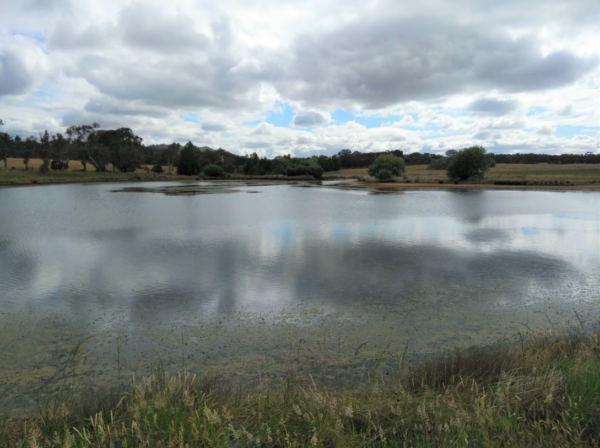
Hall’s Pond in November 2019 with a low water level, as indicated by the exposed mudflats
Bird surveys
A research team from CSIRO and the University of Canberra tracked Eastern Long-necked Turtles (Chelodina longicollis) at Ginninderra over the summers of 2019-2020 and 2020-2021. During the research the team also conducted informal waterbird surveys at Hall’s Pond and the Ginninderra Farm Dam.
The informal waterbird surveys were undertaken by Micah Davies (CSIRO Environment) and Alex Drew (CSIRO National Collections and Marine Infrastructure). Due to the presence of fish, frogs and yabbies, and the quality of the habitat, a larger number of waterbird species were observed at Hall’s Pond than at the Farm Dam.
A broad range of species are found at the pond at various times throughout the year including Dotterel, Snipe, Terns, Grebes, Coots, Ducks, Ibis, Cormorants, Herons and Pelicans. Information about the species observed at Hall’s Pond including feeding habits and photographs is included in the sections below. Unless otherwise specified, the details about each species have been sourced from the Complete Book of Australian Birds (CBAB), 1986, Readers Digest Services.

Waterbird species observed at Hall’s Pond on a casual basis via (non-formal) surveys conducted between November 2019 and July 2021
Dotterel, Snipe and Terns
The Black-fronted Dotterel (Elseyornis melanops) and Red-kneed Dotterel (Erythrogonys cinctus) are species of plover. They feed on invertebrates and seeds.
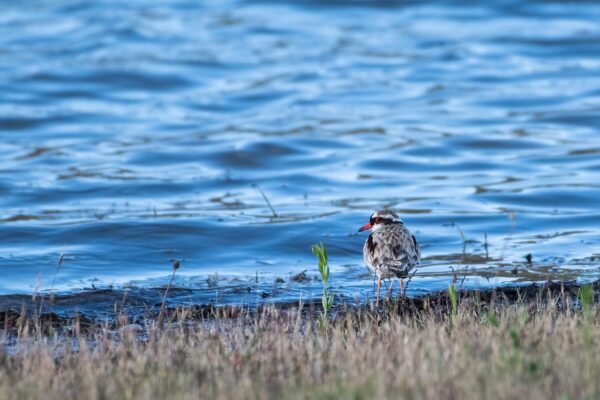
Black-fronted Dotterel (image by Penny from Pixabay)
Latham’s Snipe (Gallinago hardwickii) is migratory and breeds mainly in northern Japan. The whole population migrates and spends the non-breeding season mainly in eastern Australia. It eats seeds, plant material and invertebrates.
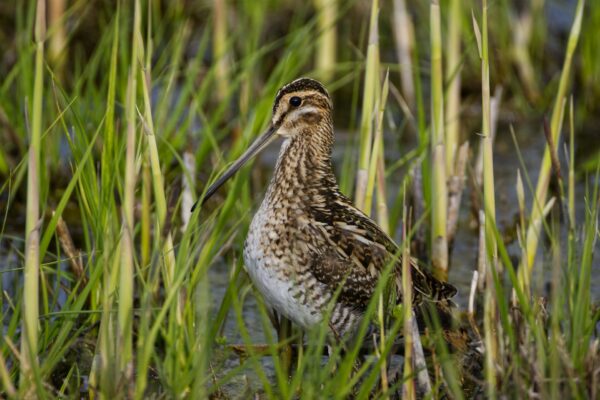
Latham’s Snipe (image by Julian from Unsplash)
Whiskered Terns (Chlidonias hybrida) primarily feed on small fish, amphibians, crustaceans and insects. They often forage by flying above the water, dropping down to catch insects and other invertebrates.
Grebes and Coots
The Australasian Grebe (Tachybaptus novaehollandiae) and Hoary-headed Grebe (Poliocephalus poliocephalus) feed on small fish, assorted aquatic insects and crustaceans mostly caught by deep diving. The Australasian Grebe will dive when disturbed, whereas the Hoary-headed Grebe is more likely to fly away (source: Birds in Backyards).
The Eurasian Coot (Fulica atra) is found in Europe, Asia, Australia, New Zealand and parts of North Africa. The coot is an omnivore, although in Australia they are mostly vegetarian taking less aquatic prey and more algae, vegetation, seeds and fruit than their Eurasian counterparts.

Eurasian Coot (image by Erika R from Pixabay)
Ducks
The Australian Shelduck (Tadorna tadornoides) is one of Australia’s largest native ducks. These ducks have a unique quack, with males calling out loudly with a honking-grunting sound and females replying with an ‘ong-ank, ong-ank’ sound. They eat grass, algae, insects and molluscs (source: Australian Museum).
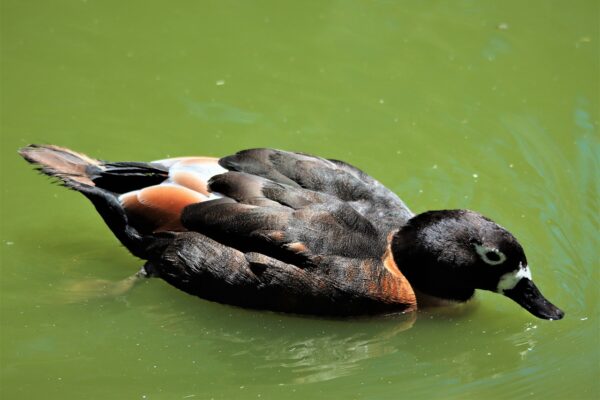
Australian Shelduck (image by Nel Botha from Pixabay)
The Grey Teal (Anas gracilis) and Pacific Black Duck (Anas superciliosa) are both types of dabbling duck. They obtain food by ‘dabbling’, where the bird plunges its head and neck underwater and upends, raising its rear end vertically out of the water. They are largely vegetarian, feeding on seeds. They supplement their seed diet by eating crustaceans, molluscs and insects.
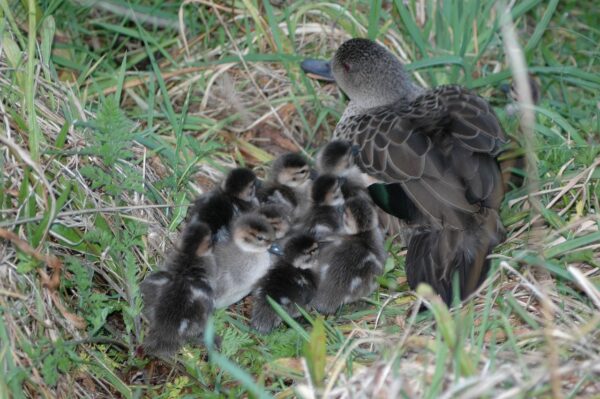
Grey Teal (image by Manu Davison from Pixabay)
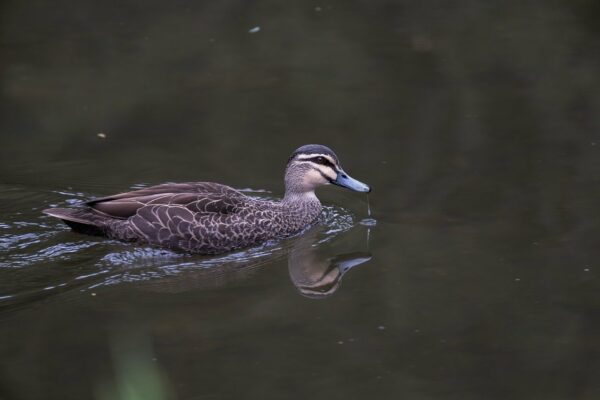
Pacific Black Duck (image by Penny from Pixabay)
The Hardhead (Aythya australis) or White-eyed duck, is Australia’s only true diving duck. Hardheads feed by deep diving. They can stay submerged for as long as a minute. They eat small aquatic creatures and water weeds (source: Complete Book of Australian Birds; Avibase – The World Bird Database).
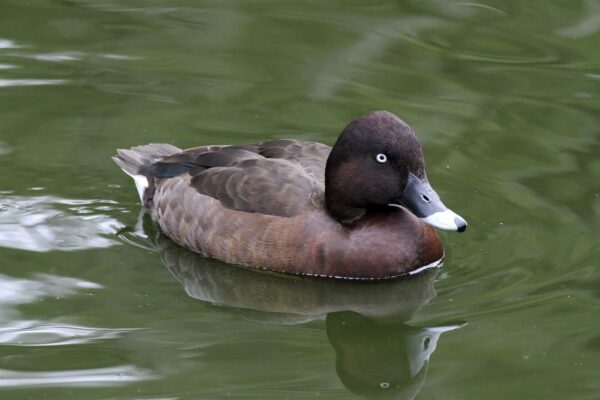
Hardhead (image by The Ledge from Pixabay)
The Pink-eared Duck (Malacorhynchus membranaceus) has an odd-shaped bills. It evolved to feed in a specialised manner: water is sucked through the bill-tip, then expelled through grooves along the side of the bill, filtering out tiny invertebrates in the process (source: Birdlife Australia).
Ibis, Herons and Pelicans
The Australian White Ibis (Threskiornis molucca) and Glossy ibis (Plegadis falcinellus) have long beaks that they use to probe water and mud for food. Their diet includes both terrestrial and aquatic invertebrates and vertebrates. The Australian White Ibis also feeds on food waste from humans. The Straw-necked Ibis (Threskiornis spinicollis) feeds mainly on terrestrial invertebrates, especially grasshoppers and locusts (source: Birdlife Australia, Birds in Backyards).
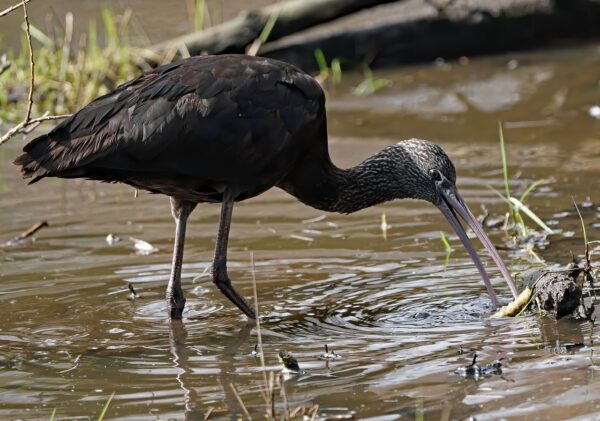
Glossy Ibis (image by Karsten Madsen from Pixabay)
White-faced Heron (Egretta novaehollandiae) are the most commonly seen herons in Australia. They feed on fish, insects and amphibians.

White-face Heron (image by Manu Davison from Pixabay)
The Australian Pelican’s (Pelecanus conspicillatus) bill is 40 cm – 50 cm long and is larger in males than females. Pelicans mainly eat fish, but they are opportunistic feeders and eat a variety of aquatic animals including crustaceans, tadpoles and turtles (source: Australian Museum).
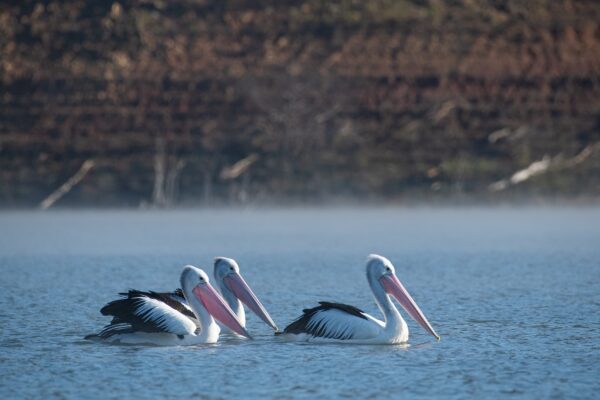
Australian Pelican (image by Penny from Pixabay)
Cormorants
The Little Black Cormorant (Phalacrocorax sulcirostris) and Little Pied Cormorant (Microcarbo melanoleucos) feed on fish, crustaceans and aquatic insects. They catch their prey underwater by diving and swimming using their feet for propulsion. As their feathers are not waterproof, cormorants are regularly seen perched with their wings outstretched to dry after fishing (source: Birds in Backyards).

Little Pied Cormorant (image by Manu Davison from Pixabay)
Current and future waterbird survey plans
We engaged an environmental consultant earlier this year to conduct conservations surveys at Ginninderra. In summer, they conducted a bird habitat assessment as part of this work. In spring 2023, they’ll revisit some of the key habitats identified and undertake systematic bird surveys at 12 locations, including around Hall’s Pond.
The survey around Hall’s Pond will build on the informal survey work to provide us with a better understanding of the number of waterbirds and the range of species present.
The other survey locations will include suitable woodland, dry forest, riparian land and derived native grasslands habitat.
